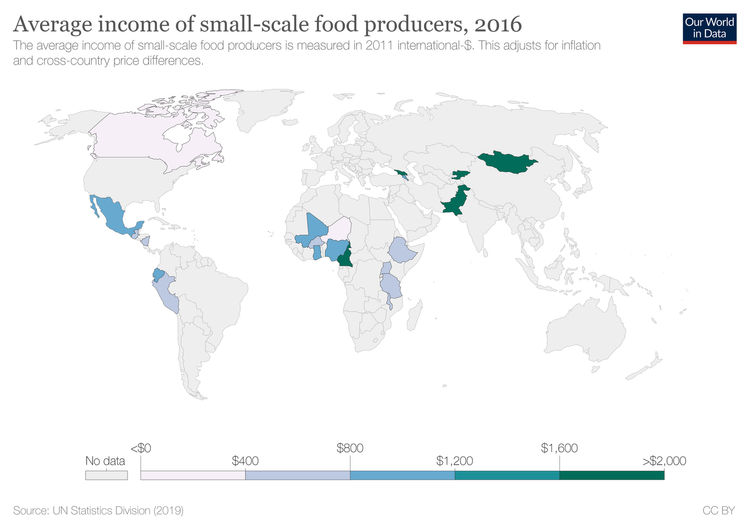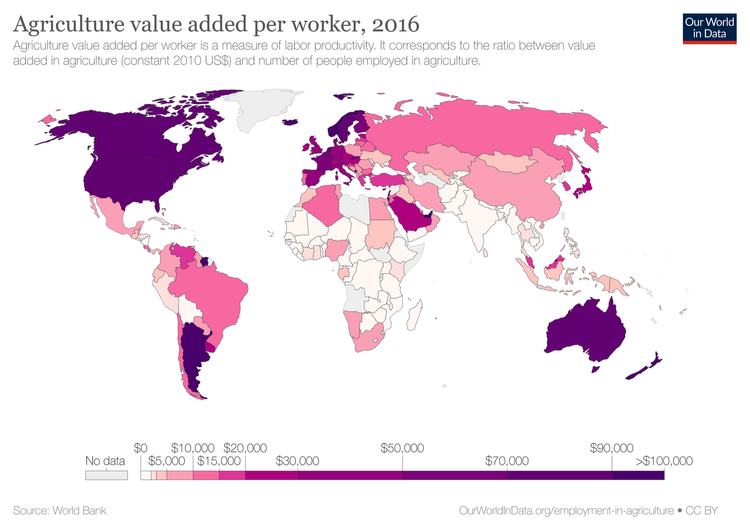
SDG #2 is to “End hunger, achieve food security and improved nutrition and promote sustainable agriculture”
Within SDG #2 are eight targets, of which this episode will focus on Target 2.3:
By 2030, double the agricultural productivity and incomes of small-scale food producers, in particular women, indigenous peoples, family farmers, pastoralists and fishers, including through secure and equal access to land, other productive resources and inputs, knowledge, financial services, markets and opportunities for value addition and non-farm employment.
Within target 2.3 are two indicators:
Indicator 2.3.1: The volume of production per labour unit by classes of farming/pastoral/forestry enterprise size.
Indicator 2.3.2: Average income of small-scale food producers, by sex and indigenous status.
Target 2.3 is the first target focusing on agriculture, an aspect of sustainable development perhaps undervalued for its impact on all facets of human life.
The cultivation of crops and rearing of livestock was not always inherent to human culture. It sprung forth when humans shifted from hunter-gatherer lifestyles, settling into the land in fixed civilisations, tilling the land to make it arable to sow seeds, and domesticating animals around them on farms, eventually producing crop harvests to a surplus level beyond mere subsistence.
In the modern era, agriculture has shifted from smallholding to industrialised farms, characterised by crop monocultures and animals selectively bred through science for the optimal traits, farming crops and animals intensively. The practice of animal husbandry of livestock produces commodities such as meat, milk, eggs and animal fibres like fur, leather and wool for human use.
So, while target 2.3 is asking us to double agricultural productivity and crop yield for the purposes of food security, we must do so sustainably, both in terms of the environment, but also economic inequality, mindful of the effects of the market value on the factors of production and outputs affecting those at the bottom distribution of wealth and income in society. Making this balancing act trickier is the trend of human overpopulation at unsustainable levels, predominantly in countries facing the most acute food security challenges.
In parallel, target 2.3 is asking the world to double the money received in exchange for the agricultural goods of farmers in each given country operating in the bottom 40% of land size in hectares, number of livestock, and revenue from agriculture.
In particular, it singles out women, indigenous people whose farms may have been historically compromised by settler colonialism, family farms, nomadic pastoralists tending herds of sheep or cattle and fishermen.
Quantifying this, within Indicator 2.3.1, is the volume of agricultural output of crops, livestock, fisheries and forestry per day of labour, measured in dollars.
The means of measurement are the FAO’s AGRISurvey, or the World Bank’s Integrated Surveys of Agriculture, a household survey financed by the Bill & Melinda Gates Foundation, as part of the broader Living Standards Measurement Study.
Another of the UN’s specialised agencies working toward the ends of this indicator is the International Fund for Agricultural Development, tasked with the financing of poverty and hunger in the rural areas of developing countries. The IFAD, in tandem with the FAO and World Bank have developed a system called RuLIS, or the Rural Livelihoods Information System to harmonise the household surveys on rural poverty.
The importance of this data is consistent with Article I of the FAO, outlining the organization’s functions, i.e. “Collect, analyse, interpret and disseminate information relating to nutrition, food and agriculture.”
Indicator 2.3.2 looks at a similar measure of smallholder agriculture incomes.
As is to be expected, small-scale farmers have produced lower output per day of labour in the SDG period than their larger counterparts, with larger producers earning two or three times the income of small-scale producers.
In addressing the disaggregation by sex of Indicator 2.3.2, male-led households have been achieving higher productivity and larger incomes than female-led households.

